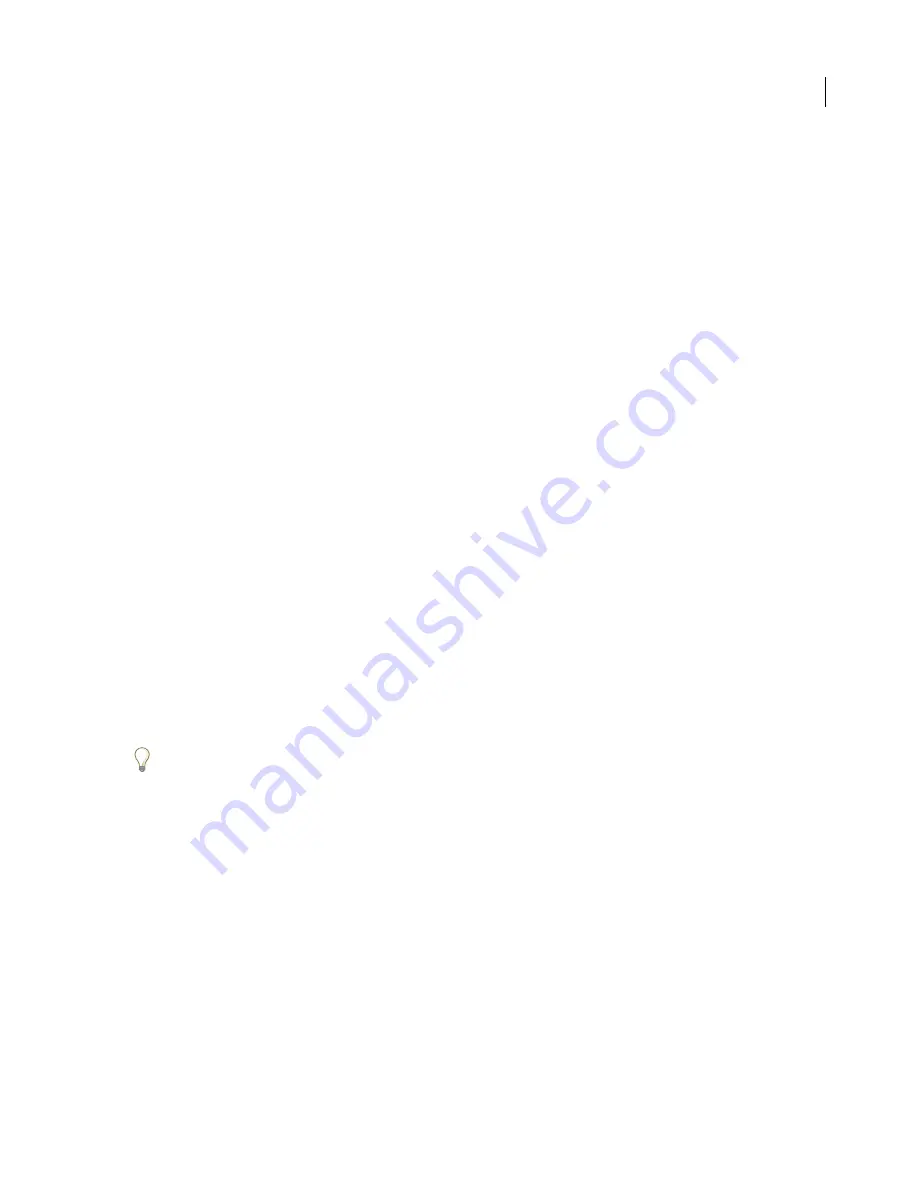
527
ADOBE PHOTOSHOP CS2
User Guide
See also
“To use Vanishing Point” on page 375
The Lighting Effects filter
To use the Lighting Effects filter
The Lighting Effects filter lets you produce myriad lighting effects on RGB images. You can also use textures from
grayscale files (called
bump maps
) to produce 3D-like effects and save your own styles for use in other images.
Note:
The Lighting Effects filter works only on RGB images.
1
Choose Filter > Render > Lighting Effects.
2
For Style, choose a style.
3
For Light Type, choose a type. If you’re using multiple lights, select and deselect On to turn individual lights on
and off.
4
To change the color of the light, click the color box in the Light Type area of the dialog box.
The color picker chosen in the General Preferences dialog box opens.
5
To set light properties, drag the corresponding slider for the following options:
Gloss
Determines how much the surface reflects light (as on the surface of a piece of photographic paper) from
Matte (low reflectance) to Glossy (high reflectance).
Material
Determines which is more reflective: the light or the object on which the light is cast. Plastic reflects the
light’s color; Metallic reflects the object’s color.
Exposure
Increases (positive values) or decreases (negative values) light. A value of 0 has no effect.
Ambience
Diffuses the light as if it were combined with other light in a room, such as sunlight or fluorescent light.
Choose a value of 100 to use only the light source, or a value of –100 to remove the light source. To change the color
of the ambient light, click the color box and use the color picker that appears.
To duplicate a light, Alt-drag (Windows) or Option-drag (Mac OS) the light within the preview window.
6
To use a texture fill, choose a channel for Texture Channel.
See also
“About the Adobe Color Picker” on page 241
“To use the Windows Color Picker” on page 247
Содержание PHOTOSHOP CS2
Страница 1: ...Chapter 1 Copyright User Guide ...






























